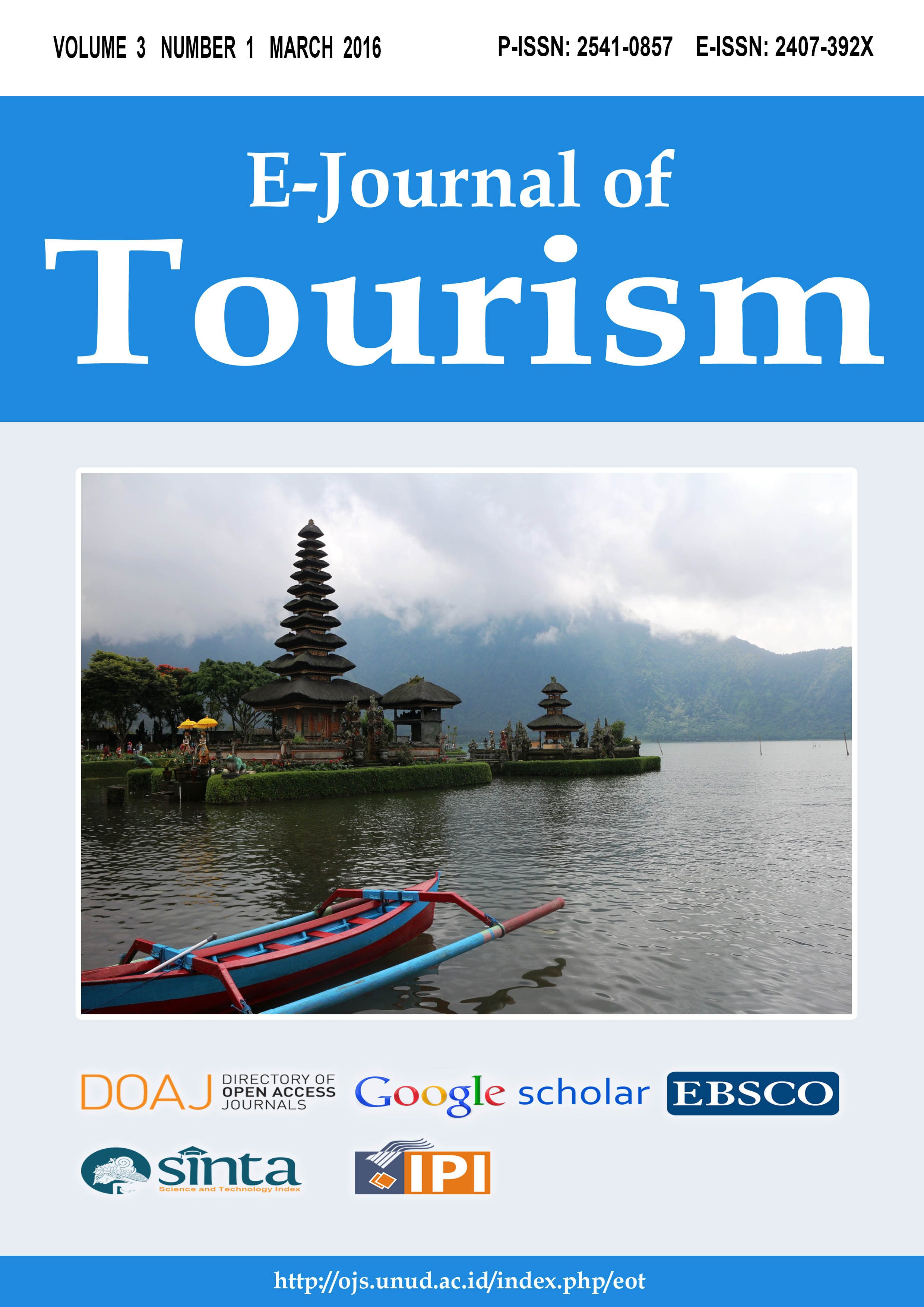Exploring Destination Identity and Destination Image in The New Age of Tourism: a Case Study of Bali Brand
Abstract
Bali's economy has grown rapidly since a decade ago. This is possible because tourism is growing continuously. However, tourism growth is not optimal because of insufficient promotion and tourism destination identity is unclear. The growth of Web 2.0 as a platform to share travel information has prompted tourism bodies to pay closer attention to how their destinations are perceived by target markets. Set within the context of the emergence of Web 2.0, a platform designed to enable users to generate and share information on the Internet, this paper evaluates the relationship between destination identity and destination image and adopts the view that a successful destination brand relies on the congruence between destination identity and destination image. The elements of destination identity are composed from the supply side and the elements of destination image are composed from the consumer side. The objective of exploring the alignment between these two perspectives is to propose a model to encourage the alignment of these two perspectives and evaluate the effectiveness of a destination branding strategy.
Downloads
Keywords

This work is licensed under a Creative Commons Attribution 4.0 International License.
The copyright of the received article shall be assigned to the journal as the publisher of the journal. The intended copyright includes the right to publish the article in various forms (including reprints). The journal maintains the publishing rights to the published articles.




















